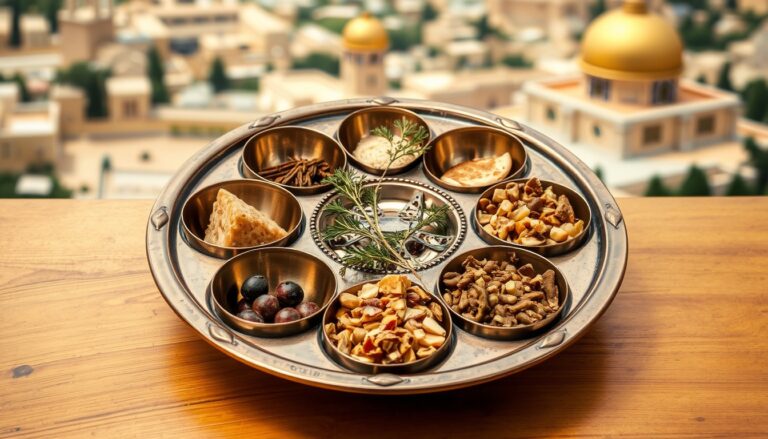This plate serves as the centerpiece of the Passover Seder, a ritual meal commemorating the Israelites’ Exodus from slavery in Egypt. As you gather with family and friends to celebrate this important Jewish holiday, you may find that the Seder plate holds significant meaning and purpose. Understanding its components can enrich your holiday experience and deepen your appreciation for its traditions.
The Seder plate, known in Hebrew as “K’aarah,” typically has six distinct compartments, each containing symbolic foods representing aspects of the Passover story. As you prepare for your Seder, it is imperative to familiarize yourself with these elements, as they each carry profound symbolism and significance. You will discover how they connect the ancient narrative with contemporary practice, uniting generations of Jewish people through shared customs.
The first item on the Seder plate is maror, a bitter herb usually made from horseradish. This serves as a poignant reminder of the bitterness and hardship that your ancestors endured while enslaved in Egypt. You may taste some of the maror during the Seder, reinforcing your understanding of their suffering and the importance of liberation.
Your Seder plate will also include charoset, a sweet mixture typically made from chopped apples, nuts, wine, and spices. This delicious concoction symbolizes the mortar that the Jewish slaves used to build structures while in Egypt. The contrast of sweet and bitter helps you reflect on the duality of your heritage—celebrating freedom while acknowledging the past’s pain.
Another crucial Seder plate component is karpas, often a green vegetable such as parsley. Karpas represents spring and renewal, highlighting the themes of rebirth and hope. As you dip the karpas in salt water during the Seder, you also recognize the tears shed by the enslaved Israelites and the fleeting nature of life.
The fourth item typically found on the Seder plate is the zeroa, a roasted bone, often from a lamb. It symbolizes the Passover sacrifice that was made in ancient times. You may find that it acts as a touchstone to reflect on the sacrifice made for freedom—an important reminder of the value of liberation.
In addition to the zeroa, you might also notice beitzah, a roasted egg. The egg represents mourning and new beginnings, serving as a testament to the cycle of life and the ongoing journey of your people. Including the egg on your Seder plate fosters discussions about life, death, and rebirth during your gathering.
Finally, your Seder plate often features chazeret, an additional bitter herb, usually romaine lettuce. This doubles down on the theme of bitterness and serves as a further reminder of the Israelites’ hardships.
As you celebrate Passover and partake in the Seder, you will find that the Seder plate is not merely a collection of foods but a vessel of history, faith, and tradition. By engaging with its components, you actively participate in an age-old storytelling tradition that honors resilience, liberation, and community. Embracing these symbols will help make your Passover experience meaningful and memorable.
